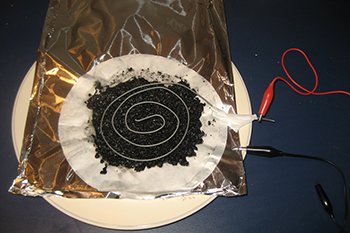The endless search for innovative solutions, to improve the performance of energy accumulators, is leading the whole world of home automation into unexplored areas. In fact, Stanford University has recently announced, the surprising innovative results related to aluminum-ion batteries. This technology will be replacing alkaline batteries and lithium-ion batteries, that are currently sold on the market.The revolutionary aluminum-air battery seems to be the final resolution of long-standing issues, related to environmental pollution, common to all auxiliary power devices. It also represents a solution for security, a matter mainly related to lithium batteries. In this article we will talk about the main features of this new technology, as well as of its future. However, we need to highlight that the we don’t have much information, what we have is fragmented and sometimes is the result of media researches.
What you should know about aluminum-ion batteries – Experiment
 In this section, we will present an interesting Italian simulation, similar to the experiment that took place in the laboratories of Stanford University.
In this section, we will present an interesting Italian simulation, similar to the experiment that took place in the laboratories of Stanford University.
Aluminum batteries are not new, in fact, they were first introduced on the market in 1987.
However, it seems that certain restrictions, that prevented them from commercial use, have been eliminated.
The objective of this experiment, is to simulate an aluminum-ion battery that can power a small electric motor, with the aid of simple and easy to find materials.
The materials used for the experiment consist in:
- – A sheet of aluminum;
- – Activated carbon for aquariums;
- – If activated carbon is in large grains, a hammer or a small mortar will be required to break it into small pieces;
- – An electric motor and some adhesive tape;
- – Tissue papers;
- – Two electric wires with clamps;
- – Salt, water and a bowl.
After you create a saline solution and place it into a bowl, you will need to take care of the aluminum foil being the main element of our experiment. Place the aluminum foil horizontally and on the top of it, you will place a tissue paper, that you have previously soaked in the saline solution. Once you have completed this step, sprinkle the activated carbon on the tissue paper. Prepare a clamp that you will be connecting with the activated carbon. Then, roll it in a ball. The other clamp will be connected to the aluminum foil. By connecting the cables properly (positive and negative) to the motor that need to be powered, and while exerting pressure on the improvised battery, you will notice that the motor will activate. This elementary battery is what is commonly known as the aluminum-air battery, and its voltage is produced by the reaction of aluminum ions with oxygen. The life of the aluminum-air battery is amazing, in fact during the experiment, it lasts for 10 minutes. The air-aluminum battery is much better than the lithium battery, however, it doesn’t have a great practical use. The reason for the lack of its success, is due to the fact that the aluminum is weak during the electrolytic reaction and is impoverished very quickly. The reaction is slow but unavoidable. The current applications on the market, keep separate the electrolyte solution from the aluminum, which are connected only when needed. This solution is usually employed as a backup battery, but thanks to the study carried out by Stanford University, these issues seem to be solved. In fact, the prototype battery is made from an aluminum anode, a cathode made of graphite and a liquid electrolyte (salt) contained in a polymer case.
(An interesting video of the experiment: https://youtu.be/6biu8Pm8Ym0)
Main benefits
Aluminum is one of the most used metals for thousands of applications and solutions. Basically, without even realizing, we are surrounded by aluminum. The reasons for this are to be found precisely in the high efficiency of the material and its relative low price. Moreover, if the battery case is ever damaged or pierced, it won’t generate explosions or it won’t fire up. Another positive aspect regards the charging time and the life battery. The prototype, in fact, can be fully recharged in about 60 seconds and supports up to 7,500 charge cycles without losing capacity, against the 1,000 cycles of the lithium-ion battery. Today however, thinking of selling nanotechnology on the market, is still a very far away perspective, which, according to the experts, won’t happen before 6 years. However, in some sectors this appears to be very close to the reality.
(A very interesting Citroen test of an electric car equipped with the next-generation battery (http://it.ibtimes.com/auto-elettriche-nuovo-record-percorsi-1800-km-con-la-batteria-alluminio-aria-video-1352437)
